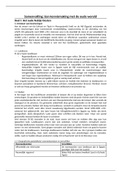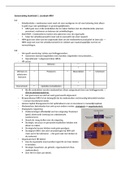Summary
Summary Solidarity and Social Justice: Key terms of weeks 1-4
- Course
- Institution
This is a summary of all the key terms that came up in the lectures and literature of week 1-4. It is not a complete summary of all the lectures, but a list of definitions of important terms and concepts, based on what is taught in the lectures but with additions from the literature and the tutoria...
[Show more]






